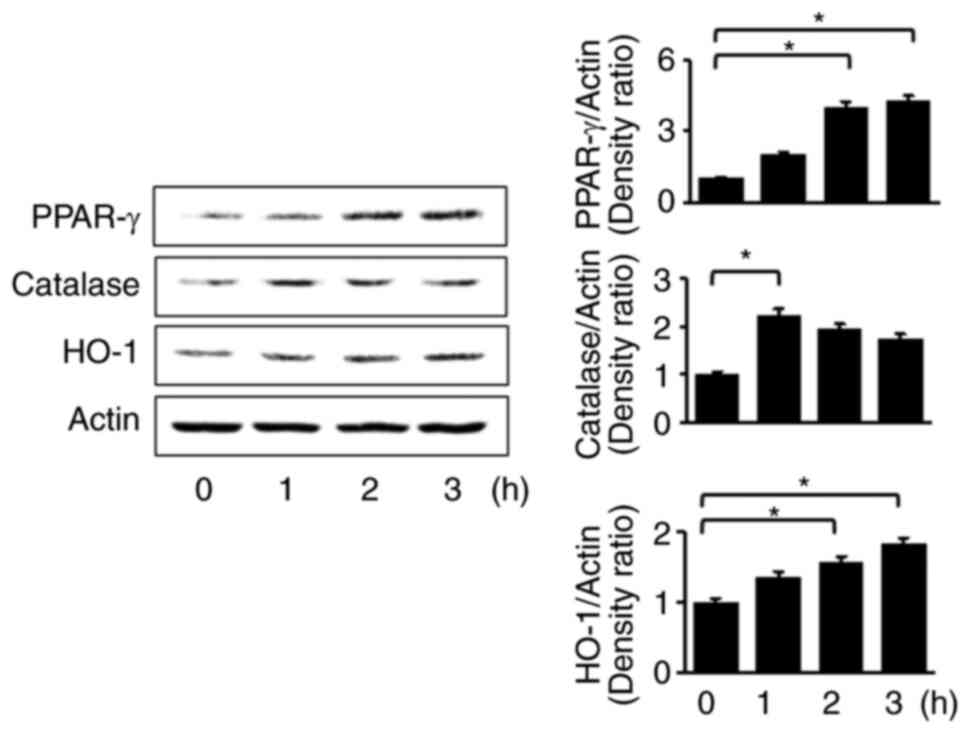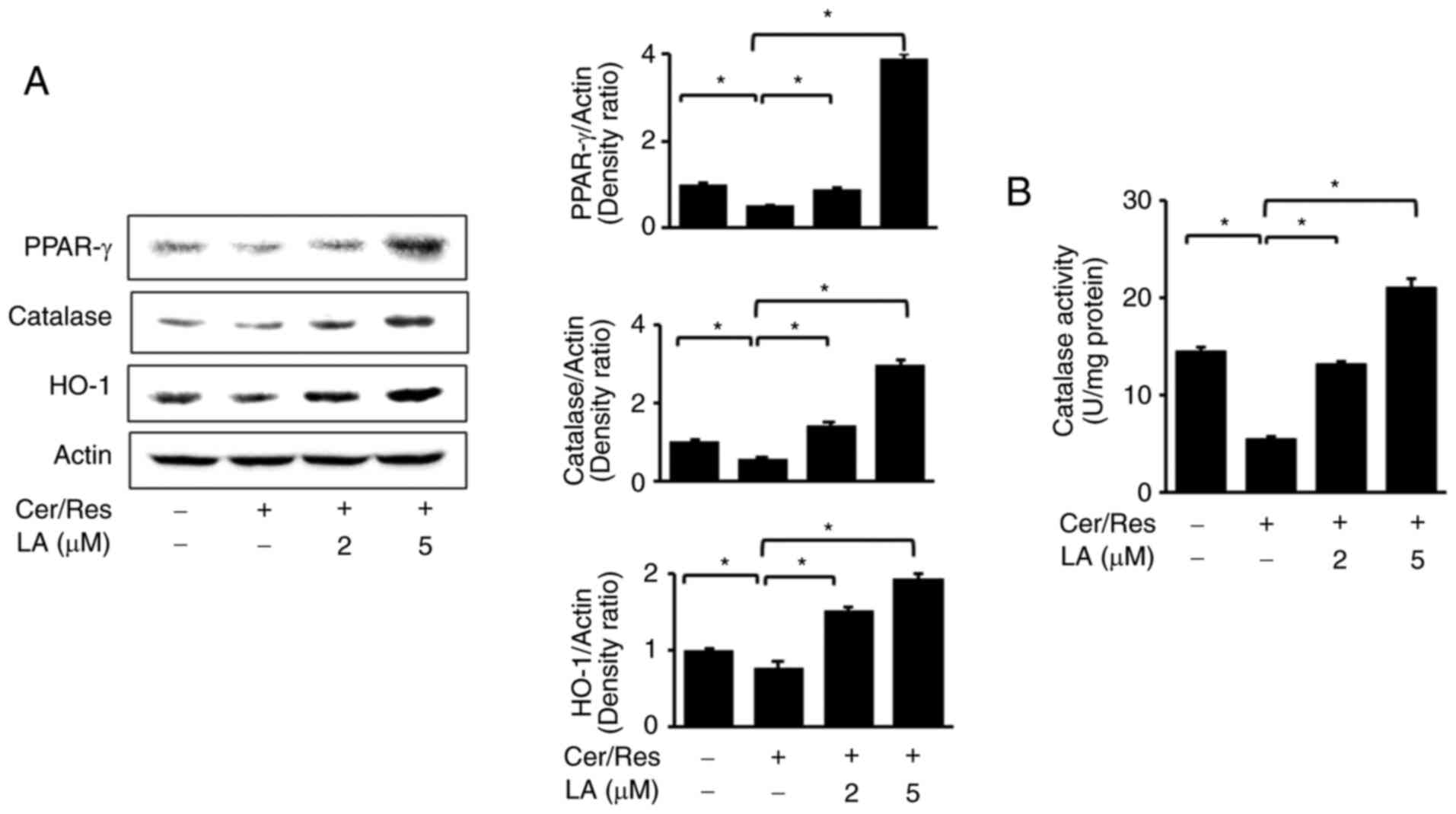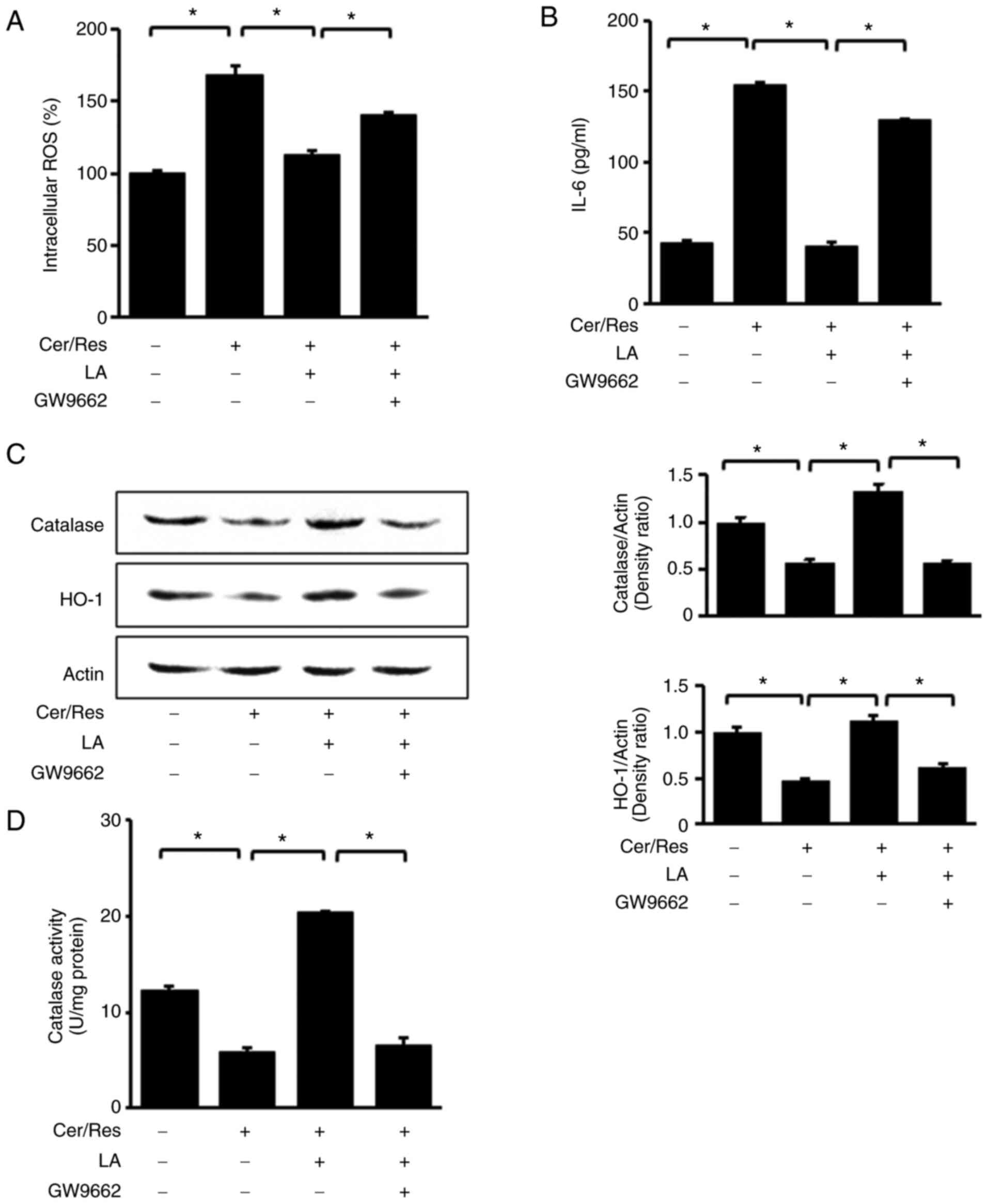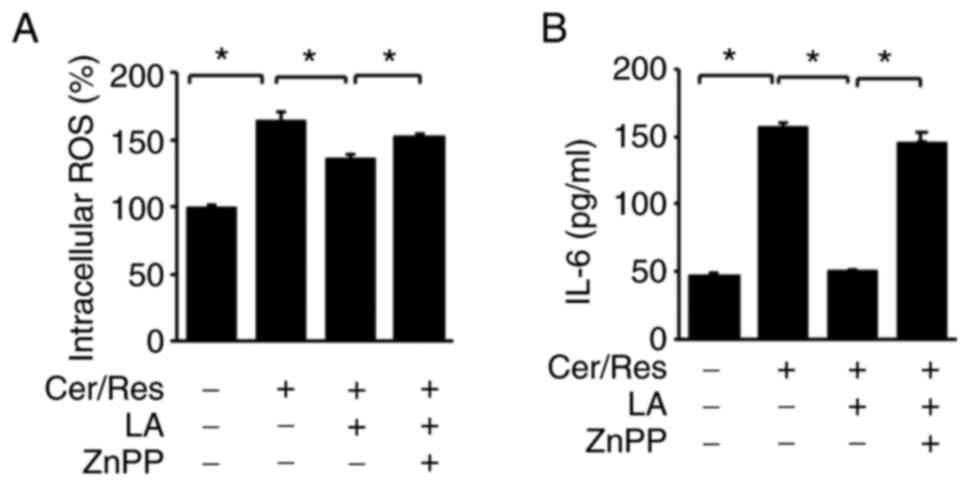|
1
|
Dellinger E, Forsmark C, Layer P, Lévy P,
Maraví-Poma E, Petrov MS, Shimosegawa T, Siriwardena AK, Uomo G,
Whitcomb DC, et al: Determinant-based classification of acute
pancreatitis severity: An international multidisciplinary
consultation. Ann Surg. 256:875–880. 2012. View Article : Google Scholar : PubMed/NCBI
|
|
2
|
Bhatia M, Wong F, Cao Y, Lau HY, Huang J,
Puneet P and Chevali L: Pathophysiology of acute pancreatitis.
Pancreatology. 5:132–144. 2005. View Article : Google Scholar : PubMed/NCBI
|
|
3
|
Steer ML, Meldolesi J and Figarella C:
Pancreatitis-The role of lysosomes. Dig Dis Sci. 29:934–938. 1984.
View Article : Google Scholar : PubMed/NCBI
|
|
4
|
Abu Hilal M and Armstrong T: The impact of
obesity on the course and outcome of acute pancreatitis. Obes Surg.
18:326–328. 2008. View Article : Google Scholar : PubMed/NCBI
|
|
5
|
Sempere L, Martinez J, de Madaria E,
Lozano B, Sanchez-Paya J, Jover R and Perez-Mateo M: Obesity and
fat distribution imply a greater systemic inflammatory response and
a worse prognosis in acute pancreatitis. Pancreatology. 8:257–264.
2008. View Article : Google Scholar : PubMed/NCBI
|
|
6
|
Hofbauer B, Saluja AK, Lerch MM, Bhagat L,
Bhatia M, Lee HS, Frossard JL, Adler G and Steer ML: Intra-acinar
cell activation of trypsinogen during caerulein-induced
pancreatitis in rats. Am J Physiol. 275:G352–G362. 1998.PubMed/NCBI
|
|
7
|
Lerch MM and Adler G: Experimental animal
models of acute pancreatitis. Int J Pancreatol. 15:159–170.
1994.PubMed/NCBI
|
|
8
|
Steppan CM, Bailey ST, Bhat S, Brown EJ,
Banerjee RR, Wright CM, Patel HR, Ahima RS and Lazar MA: The
hormone resistin links obesity to diabetes. Nature. 409:307–312.
2001. View
Article : Google Scholar : PubMed/NCBI
|
|
9
|
Azuma K, Katsukawa F, Oguchi S, Murata M,
Yamazaki H, Shimada A and Saruta T: Correlation between serum
resistin level and adiposity in obese individuals. Obes Res.
11:997–1001. 2003. View Article : Google Scholar : PubMed/NCBI
|
|
10
|
Bokarewa M, Nagaev I, Dahlberg L, Smith U
and Tarkowski A: Resistin, an adipokine with potent proinflammatory
properties. J Immunol. 174:5789–5795. 2005. View Article : Google Scholar : PubMed/NCBI
|
|
11
|
Silswal N, Singh AK, Aruna B, Mukhopadhyay
S, Ghosh S and Ehtesham NZ: Human resistin stimulates the
pro-inflammatory cytokines TNF-alpha and IL-12 in macrophages by
NF-kappaB-dependent pathway. Biochem Biophys Res Commun.
334:1092–1101. 2005. View Article : Google Scholar : PubMed/NCBI
|
|
12
|
Jiang CY, Wang W, Tang JX and Yuan ZR: The
adipocytokine resistin stimulates the production of proinflammatory
cytokines TNF-α and IL-6 in pancreatic acinar cells via NF-κB
activation. J Endocrinol Invest. 36:986–992. 2013.PubMed/NCBI
|
|
13
|
Jiang CY and Wang W: Resistin aggravates
the expression of proinflammatory cytokines in cerulean-stimulated
AR42J pancreatic acinar cells. Mol Med Rep. 15:502–506. 2017.
View Article : Google Scholar : PubMed/NCBI
|
|
14
|
Kwak MS, Lim JW and Kim H: Astaxanthin
inhibits interleukin-6 expression in cerulein/resistin-stimulated
pancreatic acinar cells. Mediators Inflamm. 2021:55872972021.
View Article : Google Scholar : PubMed/NCBI
|
|
15
|
Daniel P, Leśniowski B, Mokrowiecka A,
Jasińska A, Pietruczuk M and Małecka-Panas E: Circulating levels of
visfatin, resistin and pro-inflammatory cytokine interleukin-8 in
acute pancreatitis. Pancreatology. 10:477–482. 2010. View Article : Google Scholar : PubMed/NCBI
|
|
16
|
Kibar YI, Albayrak F, Arabul M, Dursun H,
Albayrak Y and Ozturk Y: Resistin: New serum marker for predicting
severity of acute pancreatitis. J Int Med Res. 44:328–337. 2016.
View Article : Google Scholar : PubMed/NCBI
|
|
17
|
Ściskalska M, Marek G, Grzebieniak Z and
Milnerowicz M: Resistin as a prooxidant factor and predictor of
endothelium damage in patients with mild acute pancreatitis exposed
to tobacco smoke xenobiotics. Mediators Inflamm. 2017:30397652017.
View Article : Google Scholar : PubMed/NCBI
|
|
18
|
Reed LJ: A trail of research from lipoic
acid to alpha-keto acid dehydrogenase complexes. J Biol Chem.
276:38329–38336. 2001. View Article : Google Scholar : PubMed/NCBI
|
|
19
|
Solmonson A and DeBerardinis RJ: Lipoic
acid metabolism and mitochondrial redox regulation. J Biol Chem.
293:7522–7530. 2018. View Article : Google Scholar : PubMed/NCBI
|
|
20
|
Lodge LK, Youn HD, Handelman GJ, Konishi
T, Matsugo S, Mathur VV and Packer L: Natural sources of lipoic
acid: Determination of lipoyllysine released from protease-digested
tissues by high performance liquid chromatography incorporating
electrochemical detection. J Appl Nutr. 49:3–11. 1997.
|
|
21
|
Smith AR, Shenvi SV, Widlansky M, Suh JH
and Hagen TM: Lipoic acid as a potential therapy for chronic
diseases associated with oxidative stress. Curr Med Chem.
11:1135–1146. 2004. View Article : Google Scholar : PubMed/NCBI
|
|
22
|
Hermann R, Niebch G, Borbe HO,
Fieger-Büschges H, Ruus P, Nowak H, Riethmüller-Winzen H, Peukert M
and Blume H: Enantioselective pharmacokinetics and bioavailability
of different racemic α-lipoic acid formulations in healthy
volunteers. Eur J Pharm Sci. 4:167–174. 1996. View Article : Google Scholar
|
|
23
|
Salehi B, Berkay Yılmaz Y, Antika G,
Boyunegmez Tumer T, Fawzi Mahomoodally M, Lobine D, Akram M, Riaz
M, Capanoglu E, Sharopov F, et al: Insights on the use of α-lipoic
acid for therapeutic purposes. Biomolecules. 9:3562019. View Article : Google Scholar : PubMed/NCBI
|
|
24
|
Teichert J, Hermann R, Ruus P and Preiss
R: Plasma kinetics, metabolism, and urinary excretion of
alpha-lipoic acid following oral administration in healthy
volunteers. J Clin Pharmacol. 43:1257–1267. 2003. View Article : Google Scholar : PubMed/NCBI
|
|
25
|
Breithaupt-Grögler K, Niebch G, Schneider
E, Erb K, Hermann R, Blume HH, Schug BS and Belz GG:
Dose-proportionality of oral thioctic acid-coincidence of
assessments via pooled plasma and individual data. Eur J Pharm Sci.
8:57–65. 1999. View Article : Google Scholar : PubMed/NCBI
|
|
26
|
Evans JL, Heymann CJ, Goldfine ID and
Gavin LA: Pharmacokinetics, tolerability, and fructosamine-lowering
effect of a novel, controlled-release formulation of alpha-lipoic
acid. Endocr Pract. 8:29–35. 2002. View Article : Google Scholar : PubMed/NCBI
|
|
27
|
Jones W, Li X, Qu ZC, Perriott L,
Whitesell RR and May JM: Uptake, recycling, and antioxidant actions
of alpha-lipoic acid in endothelial cells. Free Radic Biol Med.
33:83–93. 2002. View Article : Google Scholar : PubMed/NCBI
|
|
28
|
Hagen TM, Vinarsky V, Wehr CM and Ames BN:
(R)-alpha-lipoic acid reverses the age-associated increase in
susceptibility of hepatocytes to tert-butylhydroperoxide both in
vitro and in vivo. Antioxid Redox Signal. 2:473–483. 2000.
View Article : Google Scholar : PubMed/NCBI
|
|
29
|
Fayez AM, Zakaria S and Moustafa D: Alpha
lipoic acid exerts antioxidant effect via Nrf2/HO-1 pathway
activation and suppresses hepatic stellate cells activation induced
by methotrexate in rats. Biomed Pharmacother. 105:428–433. 2018.
View Article : Google Scholar : PubMed/NCBI
|
|
30
|
Bilska A and Włodek L: Lipoic acid-the
drug of the future? Pharmacol Rep. 57:570–577. 2005.PubMed/NCBI
|
|
31
|
Park SJ, Seo SW, Choi OS and Park CS:
Alpha-lipoic acid protects against cholecystokinin-induced acute
pancreatitis in rats. World J Gastroenterol. 11:4883–4885. 2005.
View Article : Google Scholar : PubMed/NCBI
|
|
32
|
Berger J and Moller DE: The mechanisms of
action of PPARs. Annu Rev Med. 53:409–435. 2002. View Article : Google Scholar : PubMed/NCBI
|
|
33
|
Boitier E, Gautier JC and Roberts R:
Advances in understanding the regulation of apoptosis and mitosis
by peroxisome-proliferator activated receptors in pre-clinical
models: Relevance for human health and disease. Comp Hepatol.
2:32003. View Article : Google Scholar : PubMed/NCBI
|
|
34
|
Gearing KL, Göttlicher M, Teboul M,
Widmark E and Gustafsson JA: Interaction of the
peroxisome-proliferator-activated receptor and retinoid X receptor.
Proc Natl Acad Sci USA. 90:1440–1444. 1993. View Article : Google Scholar : PubMed/NCBI
|
|
35
|
Rogue A, Spire C, Brun M, Claude N and
Guillouzo A: Gene expression changes induced by PPAR gamma agonists
in animal and human liver. PPAR Res. 2010:3251832010. View Article : Google Scholar : PubMed/NCBI
|
|
36
|
Marx N, Bourcier T, Sukhova GK, Libby P
and Plutzky J: PPARgamma activation in human endothelial cells
increases plasminogen activator inhibitor type-1 expression:
PPARgamma as a potential mediator in vascular disease. Arterioscler
Thromb Vasc Biol. 19:546–551. 1999. View Article : Google Scholar : PubMed/NCBI
|
|
37
|
Rogue A, Lambert C, Jossé R, Antherieu S,
Spire C, Claude N and Guillouzo A: Comparative gene expression
profiles induced by PPARγ and PPARα/γ agonists in human
hepatocytes. PLoS One. 6:e188162011. View Article : Google Scholar : PubMed/NCBI
|
|
38
|
Yu JH, Kim KH and Kim H: SOCS 3 and
PPAR-gamma ligands inhibit the expression of IL-6 and TGF-beta1 by
regulating JAK2/STAT3 signaling in pancreas. Int J Biochem Cell
Biol. 40:677–688. 2008. View Article : Google Scholar : PubMed/NCBI
|
|
39
|
Abraham NG and Kappas A: Pharmacological
and clinical aspects of heme oxygenase. Pharmacol Rev. 60:79–127.
2008. View Article : Google Scholar : PubMed/NCBI
|
|
40
|
Kirkby KA and Adin CA: Products of heme
oxygenase and their potential therapeutic applications. Am J
Physiol Renal Physiol. 290:F563–F571. 2006. View Article : Google Scholar : PubMed/NCBI
|
|
41
|
Krönke G, Kadl A, Ikonomu E, Blüml S,
Fürnkranz A, Sarembock IJ, Bochkov VN, Exner M, Binder BR and
Leitinger N: Expression of heme oxygenase-1 in human vascular cells
is regulated by peroxisome proliferator-activated receptors.
Arterioscler Thromb Vasc Biol. 27:1276–1282. 2007. View Article : Google Scholar : PubMed/NCBI
|
|
42
|
Li M, Li Z, Sun X, Yang L, Fang P, Liu Y,
Li W, Xu J, Lu J, Xie M and Zhang D: Heme oxygenase-1/p21WAF1
mediates peroxisome proliferator-activated receptor-gamma signaling
inhibition of proliferation of rat pulmonary artery smooth muscle
cells. FEBS J. 277:1543–1550. 2010. View Article : Google Scholar : PubMed/NCBI
|
|
43
|
Bilban M, Bach FH, Otterbein SL, Ifedigbo
E, d'Avila JC, Esterbauer H, Chin BY, Usheva A, Robson SC, Wagner O
and Otterbein LE: Carbon monoxide orchestrates a protective
response through PPARgamma. Immunity. 24:601–610. 2006. View Article : Google Scholar : PubMed/NCBI
|
|
44
|
Chen T, Jin X, Crawford BH, Cheng H,
Saafir TB, Wagner MB, Yuan Z and Ding G: Cardioprotection from
oxidative stress in the newborn heart by activation of PPARγ is
mediated by catalase. Free Radic Biol Med. 53:208–215. 2012.
View Article : Google Scholar : PubMed/NCBI
|
|
45
|
Kyung S, Lim JW and Kim H: α-Lipoic acid
inhibits IL-8 expression by activating Nrf2 Signaling in
Helicobacter pylori-infected gastric epithelial cells. Nutrients.
11:25422019. View Article : Google Scholar
|
|
46
|
Livak KJ and Schmittgen TD: Analysis of
relative gene expression data using real-time quantitative PCR and
the 2(−Delta Delta C(T)) method. Methods. 25:402–408. 2001.
View Article : Google Scholar : PubMed/NCBI
|
|
47
|
Lee J, Lim JW and Kim H: Lycopene inhibits
oxidative stress-mediated inflammatory responses in
ethanol/palmitoleic acid-stimulated pancreatic acinar AR42J cells.
Int J Mol Sci. 22:21012021. View Article : Google Scholar : PubMed/NCBI
|
|
48
|
Choi J, Lim JW and Kim H: Lycopene
inhibits Toll-like receptor 4-mediated expression of inflammatory
cytokines in house dust mite-stimulated respiratory epithelial
cell. Molecules. 26:31272021. View Article : Google Scholar : PubMed/NCBI
|
|
49
|
Sechovcová S, Královcová P, Kanďár R and
Ventura K: The issue of HPLC determination of endogenous lipoic
acid in human plasma. Biomed Chromatogr. 32:e41722018. View Article : Google Scholar : PubMed/NCBI
|
|
50
|
Borowczyk K, Olejarz P, Chwatko G,
Szylberg M and Głowacki RA: Simplified method for simultaneous
determination of α-lipoic acid and low-molecular-mass thiols in
human plasma. Int J Mol Sci. 21:10492020. View Article : Google Scholar : PubMed/NCBI
|
|
51
|
Mignini F, Capacchietti M, Napolioni V,
Reggiardo G, Fasani R and Ferrari P: Single dose bioavailability
and pharmacokinetic study of a innovative formulation of α-lipoic
acid (ALA600) in healthy volunteers. Minerva Med. 102:475–482.
2011.PubMed/NCBI
|
|
52
|
Leesnitzer LM, Parks DJ, Bledsoe RK, Cobb
JE, Collins JL, Consler TG, Davis RG, Hull-Ryde EA, Lenhard JM,
Patel L, et al: Functional consequences of cysteine modification in
the ligand binding sites of peroxisome proliferator activated
receptors by GW9662. Biochemistry. 41:6640–6650. 2002. View Article : Google Scholar : PubMed/NCBI
|
|
53
|
Labbé RF, Vreman HJ and Stevenson DK: Zinc
protoporphyrin: A metabolite with a mission. Clin Chem.
45:2060–2072. 1999. View Article : Google Scholar : PubMed/NCBI
|
|
54
|
Christophe J: Pancreatic tumoral cell line
AR42J: An amphicrine model. Am J Physiol. 266:G963–G971.
1994.PubMed/NCBI
|
|
55
|
Blackmore M and Hirst BH: Autocrine
stimulation of growth of AR4-2J rat pancreatic tumour cells by
gastrin. Br J Cancer. 66:32–38. 1992. View Article : Google Scholar : PubMed/NCBI
|
|
56
|
Ju KD, Lim JW, Kim KH and Kim H: Potential
role of NADPH oxidase-mediated activation of Jak2/Stat3 and
mitogen-activated protein kinases and expression of TGF-β1 in the
pathophysiology of acute pancreatitis. Inflamm Res. 60:791–800.
2011. View Article : Google Scholar : PubMed/NCBI
|
|
57
|
Yu JH, Kim H and Kim KH: Calcium-dependent
apoptotic gene expression in cerulein-treated AR42J cells. Ann N Y
Acad Sci. 1010:66–69. 2003. View Article : Google Scholar : PubMed/NCBI
|
|
58
|
Gu L, Ge Z, Wang Y, Shen M, Zhao P and
Chen W: Double-stranded RNA-dependent kinase PKR activates NF-κB
pathway in acute pancreatitis. Biochem Biophys Res Commun.
503:1563–1569. 2018. View Article : Google Scholar : PubMed/NCBI
|
|
59
|
Zhao Q, Tang X, Huang J, Li J, Chen Q, Sun
Y and Wu J: Melatonin attenuates endoplasmic reticulum stress in
acute pancreatitis. Pancreas. 47:884–891. 2018. View Article : Google Scholar : PubMed/NCBI
|
|
60
|
Wang Y, Wang G, Cui L, Liu R, Xiao H and
Yin C: Angiotensin 1–7 ameliorates caerulein-induced inflammation
in pancreatic acinar cells by downregulating Toll-like receptor
4/nuclear factor-κB expression. Mol Med Rep. 17:3511–3518.
2018.PubMed/NCBI
|
|
61
|
Tang X, Tang G, Liang Z, Qin M, Fang C and
Zhang L: Effects of ghrelin miRNA on inflammation and calcium
pathway in pancreatic acinar cells of acute pancreatitis. Pancreas.
46:1305–1313. 2017. View Article : Google Scholar : PubMed/NCBI
|
|
62
|
Lugea A, Waldron RT, Mareninova OA,
Shalbueva N, Deng N, Su HY, Thomas DD, Jones EK, Messenger SW, Yang
J, et al: Human pancreatic acinar cells: Proteomic
characterization, physiologic responses, and organellar disorders
in ex vivo pancreatitis. Am J Pathol. 187:2726–2743. 2017.
View Article : Google Scholar : PubMed/NCBI
|
|
63
|
Chao KC, Chao KF, Chuang CC and Liu SH:
Blockade of interleukin 6 accelerates acinar cell apoptosis and
attenuates experimental acute pancreatitis in vivo. Brit J Surg.
93:332–338. 2006. View Article : Google Scholar : PubMed/NCBI
|
|
64
|
Yu JH, Kim KH and Kim H: Role of NADPH
oxidase and calcium in cerulein-induced apoptosis: Involvement of
apoptosis-inducing factor. Ann NY Acad Sci. 1090:292–297. 2006.
View Article : Google Scholar : PubMed/NCBI
|
|
65
|
Yu JH, Lim JW and Kim H: Altered gene
expression in cerulein-stimulated pancreatic acinar cells:
Pathologic mechanism of acute pancreatitis. Kor J Phsyiol
Pharmacol. 13:409–416. 2009. View Article : Google Scholar : PubMed/NCBI
|
|
66
|
Song EA, Lim JW and Kim H: Docosahexaenoic
acid inhibits IL-6 expression via PPARγ-mediated expression of
catalase in cerulein-stimulated pancreatic acinar cells. Int J
Biochem Cell Biol. 88:60–68. 2017. View Article : Google Scholar : PubMed/NCBI
|




















